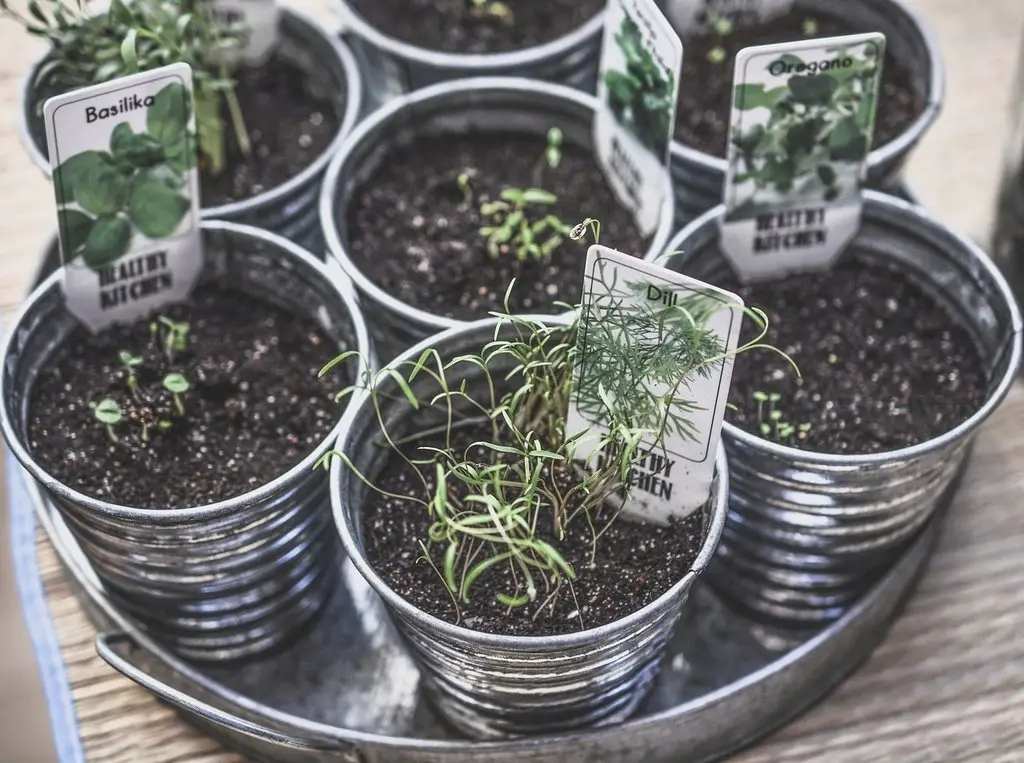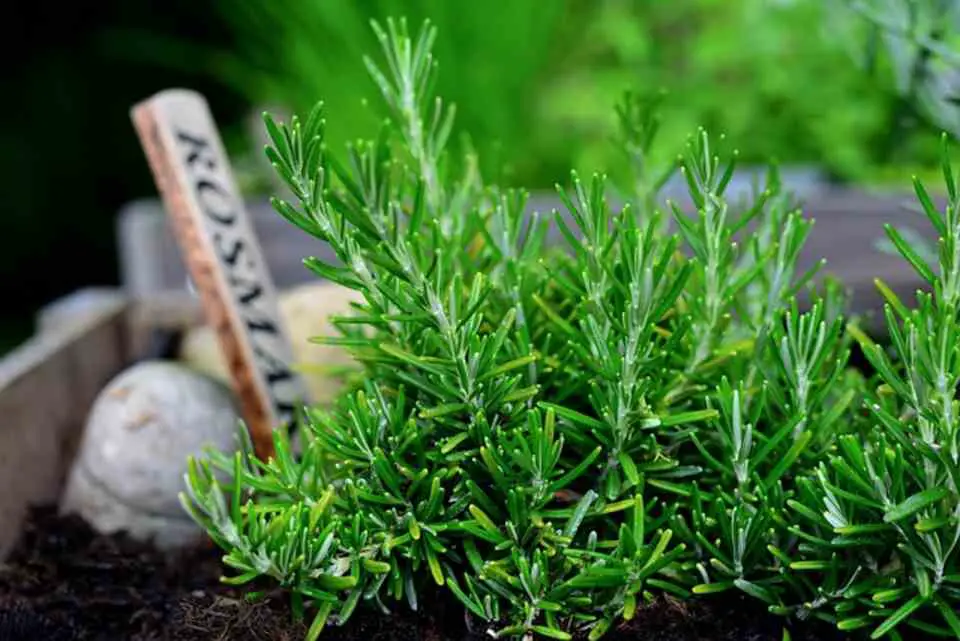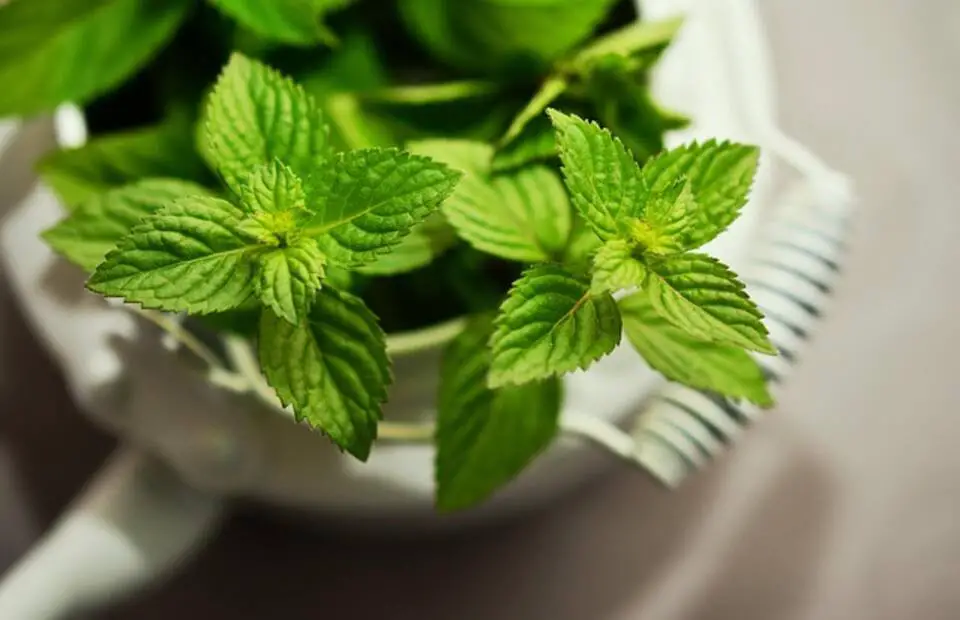Herbs You Can Grow Indoors Year Round: The Ultimate Guide
Tired of buying fresh herbs only to watch them wilt in the fridge? Good news, you don’t need a garden or even a balcony to enjoy fresh flavor at your fingertips. There are plenty of herbs you can grow indoors year round, right on your windowsill or kitchen counter. From fragrant basil to hardy rosemary, these herbs thrive inside with just a little light and care, giving you a fresh, homegrown supply no matter the season.
Table of Contents
Why Grow Herbs Indoors?
Benefits of Indoor Herb Gardening
- Freshness on Demand: Having a selection of herbs growing indoors means you can snip exactly what you need, right when you need it, ensuring maximum flavor and nutrition for your meals.
- Year-Round Availability: Indoor gardening frees you from the limitations of outdoor seasons, so you can enjoy your favorite herbs even in the depths of winter or during rainy spells.
- Natural Air Enhancement: Many herbs emit pleasant aromas and can help purify the air, making your home feel fresher and more inviting.
- Aesthetic Appeal: Lush green herbs add a touch of natural beauty to your kitchen, living room, or office, brightening up any space with their vibrant foliage.
- Cost Savings and Sustainability: Growing your own herbs reduces grocery bills and packaging waste, supporting a more sustainable lifestyle.
- Learning and Wellbeing: Tending to plants can be therapeutic, reduce stress, and provide a sense of accomplishment as you nurture life indoors.
Top 16+ Herbs You Can Grow Indoors All Year
Explore the best herbs for indoor cultivation, each with unique flavors, uses, and specific care requirements to help you succeed.
Basil
- Flavor: Basil offers a sweet, peppery, and highly aromatic profile that is unmistakable and beloved in many cuisines.
- Uses: Essential in Mediterranean and Southeast Asian dishes, basil shines in pesto, caprese salads, tomato sauces, and even as a fresh topping for pizza.
- Growing Tips: Basil thrives in warmth and abundant sunlight, ideally 6-8 hours a day. Sow new seeds every few weeks to maintain a steady supply, and avoid placing basil near cold windows or in drafty areas. Regular pinching of the tops encourages bushier growth and prevents early flowering.
Mint (Spearmint, Peppermint)
- Flavor: Mint varieties are known for their cool, refreshing, and invigorating taste, making them a favorite for both culinary and medicinal uses.
- Uses: Perfect for herbal teas, mojitos, fruit salads, yogurt sauces, and as a garnish for desserts, mint also has soothing properties for digestion.
- Growing Tips: Mint is a vigorous grower that prefers indirect light and consistently moist soil. Plant it in its own container to prevent it from overtaking other herbs. Regular harvesting helps keep the plant compact and healthy, and its scent can help deter household pests.
Thyme
- Flavor: Thyme delivers a subtle earthy, slightly minty, and savory flavor that enhances a wide variety of dishes.
- Uses: It’s a staple in roasts, soups, stews, and marinades, and pairs beautifully with meats, vegetables, and bread.
- Growing Tips: Thyme needs at least 6 hours of direct sunlight daily and prefers soil that drains well. It’s a compact herb that fits easily on windowsills, and benefits from occasional trimming to encourage dense, healthy growth.
Chives
- Flavor: Chives impart a delicate onion-like flavor that is milder than regular onions, making them versatile and easy to use.
- Uses: Sprinkle chives on baked potatoes, eggs, salads, and creamy soups for a burst of fresh flavor and color.
- Growing Tips: Chives are simple to grow from seed or by dividing mature clumps. They thrive in bright light and need the soil to be kept consistently moist but not soggy. Regular snipping encourages new shoots and prevents the plant from becoming leggy.
Parsley (Flat-leaf & Curly)
- Flavor: Parsley offers a clean, fresh, and slightly peppery taste that complements a wide range of dishes without overpowering them.
- Uses: Use parsley as a garnish, in tabbouleh, chimichurri, soups, stews, and sauces for both flavor and visual appeal.
- Growing Tips: Parsley grows well from seeds or root divisions and prefers a sunny spot, though it can tolerate partial shade. Flat-leaf parsley is generally preferred for cooking due to its stronger flavor, while curly parsley is often used for garnishing.
Rosemary
- Flavor: Rosemary is bold, with a pine-like, woody aroma that adds depth and character to savory dishes.
- Uses: Ideal for seasoning roasts, potatoes, breads, and infused oils, rosemary also works well in marinades and herbal teas.
- Growing Tips: Rosemary requires a lot of sunlight-at least 6-8 hours a day-and well-draining soil. Place it in a south-facing window and allow the soil to dry out between waterings. Prune regularly to promote bushier growth and prevent the plant from becoming woody.
Sage
- Flavor: Sage is earthy, slightly peppery, and robust, offering a unique flavor that stands up well in hearty dishes.
- Uses: Commonly used in poultry stuffing, sausages, brown butter sauces, and roasted vegetables, sage is a classic herb for fall and winter recipes.
- Growing Tips: Sage tolerates dry indoor air and prefers strong sunlight. Allow the soil to dry out between waterings, and trim the plant regularly to encourage new growth and prevent it from becoming too woody.
Oregano
- Flavor: Oregano is robust, slightly bitter, and earthy, making it a key ingredient in many Mediterranean and Mexican dishes.
- Uses: Sprinkle oregano on pizza, pasta, grilled meats, and in tomato-based sauces for a distinctive, aromatic touch.
- Growing Tips: Oregano is a low-maintenance herb that thrives on a sunny windowsill and can handle some neglect. It prefers well-draining soil and occasional watering, making it perfect for busy indoor gardeners.
Dill
- Flavor: Dill has a tangy, fresh, and slightly anise-like taste that pairs beautifully with fish, eggs, and pickled foods.
- Uses: Use dill in pickling, potato salads, seafood dishes, and yogurt-based sauces for a burst of flavor.
- Growing Tips: Dill grows best from seed and needs plenty of bright light to thrive. Keep the soil evenly moist and harvest frequently to encourage new growth and prevent the plant from bolting.
Marjoram
- Flavor: Marjoram is sweet, floral, and milder than oregano, adding a gentle complexity to dishes.
- Uses: It’s great in salad dressings, soups, stews, and as a finishing herb for roasted vegetables and meats.
- Growing Tips: Marjoram grows well in containers and prefers a sunny spot indoors. Regular trimming keeps the plant bushy and productive, and it thrives in well-draining soil.
Lemon Balm
- Flavor: Lemon balm offers a bright, citrusy, and minty flavor that is uplifting and refreshing.
- Uses: Perfect for herbal teas, desserts, fruit salads, and as a garnish for drinks, lemon balm also has calming properties.
- Growing Tips: Lemon balm is easy to grow from seed and prefers indirect light and consistently moist soil. It can become bushy, so regular harvesting keeps it manageable and encourages new leaves.
Bay Laurel
- Flavor: Bay laurel leaves provide a deep, aromatic, and slightly floral flavor that infuses dishes during slow cooking.
- Uses: Essential in soups, stews, braises, and sauces, bay leaves are typically removed before serving.
- Growing Tips: Bay laurel needs a large pot with fast-draining soil and plenty of bright light. Good air circulation is important to prevent disease, and pruning helps maintain a manageable size indoors.
Chervil
- Flavor: Chervil is mild, with hints of anise and parsley, and is often described as delicate and subtle.
- Uses: Popular in French cuisine, chervil is used in fines herbes blends, salads, egg dishes, and as a finishing herb.
- Growing Tips: Chervil prefers cooler temperatures and moderate sunlight, making it ideal for indoor growing. Start from seed and keep the soil consistently moist for best results.
Tarragon
- Flavor: Tarragon has a bittersweet, licorice-like flavor that is both distinctive and versatile in the kitchen.
- Uses: Use tarragon in French sauces, vinegars, chicken dishes, and salad dressings to add a unique twist.
- Growing Tips: French tarragon is prized for its flavor and grows best on a sunny windowsill. It prefers well-draining soil and should be pruned regularly to encourage bushy growth.
Cilantro
- Flavor: Cilantro is fresh, citrusy, and slightly peppery, adding a burst of brightness to many dishes.
- Uses: Essential in salsas, curries, salads, and as a garnish for soups and tacos, cilantro is a staple in global cuisines.
- Growing Tips: Cilantro is easy to grow from seed and prefers cooler indoor temperatures. Harvest frequently to prevent bolting and to keep the leaves tender and flavorful.
Fennel
- Flavor: Fennel offers a sweet, anise-like flavor that is both refreshing and aromatic.
- Uses: Use fennel fronds in salads, seafood dishes, and herbal teas, while the bulbs can be roasted or sautéed.
- Growing Tips: Fennel grows well from seed and needs a deep pot to accommodate its long taproot. Provide plenty of sunlight and keep the soil moist but not waterlogged.
Catnip
- Flavor: Catnip has a minty aroma and flavor that is irresistible to cats and mildly calming for humans.
- Uses: Grow catnip for your feline friends or use it in calming herbal teas for yourself.
- Growing Tips: Catnip is easy to grow in containers and prefers bright light. Regular harvesting prevents the plant from becoming too tall and encourages bushier growth.
How to Grow Herbs Indoors: Step-by-Step
1. Choose the Right Location
- Select a spot that receives plenty of natural sunlight, such as a south-facing window, which is ideal for most herbs. East or west-facing windows can also work for herbs that require less intense light.
- If your home lacks sufficient sunlight, invest in full-spectrum grow lights to ensure your herbs receive the 12–16 hours of light they need each day for optimal growth and flavor.
2. Select Proper Containers
- Use pots or containers with adequate drainage holes to prevent water from accumulating at the bottom, which can lead to root rot and other issues.
- Choose containers that are appropriately sized for each herb’s root system, and consider using saucers or trays underneath to protect your furniture from excess water.
3. Use Quality Potting Soil
- Select a high-quality potting mix that is light, well-aerated, and drains efficiently. Mediterranean herbs like rosemary and thyme benefit from a blend that includes sand or cactus mix, while others like basil and parsley do well in standard potting soil.
- Avoid using garden soil indoors, as it may contain pests or diseases that can harm your plants.
4. Water Wisely
- Herbs generally prefer to dry out slightly between waterings, especially those native to Mediterranean climates. Always check the top inch of soil before watering to avoid overwatering.
- Use room-temperature water and water the base of the plant rather than the leaves to prevent fungal issues. Adjust your watering schedule based on the season and indoor humidity levels.
5. Feed Occasionally
- Fertilize your herbs with a balanced, organic liquid fertilizer once or twice a month to support healthy, vigorous growth. Avoid over-fertilizing, as this can cause excessive leaf growth with reduced flavor.
- Consider using compost tea or fish emulsion for a natural boost, especially during the active growing season.
6. Prune and Harvest Regularly
- Frequent pruning and harvesting encourage your herbs to grow bushier and produce more leaves. Pinch back the tips of stems and remove any flowers to maintain the best flavor and prolong the plant’s productivity.
- Use clean, sharp scissors or your fingers to harvest, and avoid removing more than one-third of the plant at a time.
7. Rotate and Refresh
- Rotate your pots every few days to ensure even exposure to sunlight, which helps prevent your plants from leaning or growing unevenly.
- Re-seed or propagate new plants as needed, especially with annual herbs like basil and cilantro, to maintain a continuous supply of fresh leaves throughout the year.
Common Challenges & Solutions
Low Light: Many homes struggle with insufficient sunlight, especially in winter. Supplement with quality grow lights to keep your herbs healthy and productive.
Pests: Indoor herbs can attract pests such as aphids, spider mites, and whiteflies. Inspect your plants regularly and use natural remedies like neem oil, insecticidal soap, or simply rinse leaves with water to keep pests at bay.
Overwatering: Watering too frequently is a common problem that leads to root rot. Always check the soil before watering and ensure your pots have proper drainage. If in doubt, it’s better to underwater than overwater.
Leggy Growth: Herbs that stretch and become spindly are usually not getting enough light. Move them to a brighter spot or increase their exposure to grow lights, and pinch back stems to encourage fuller growth.
Frequently Asked Questions
What are the easiest herbs to start with indoors?
For beginners, the most forgiving herbs are chives, mint, parsley, oregano, thyme, and basil. These herbs are resilient, adapt well to indoor conditions, and require minimal maintenance. They’re also versatile in the kitchen, making them a great starting point for any indoor herb garden.
Can I grow herbs from cuttings?
Absolutely! Many herbs, such as basil, mint, and rosemary, can be easily propagated from stem cuttings. Simply snip a healthy stem, remove the lower leaves, and place it in a glass of water until roots develop. Once the roots are a couple of inches long, transplant the cutting into a pot of soil for continued growth.
How long will indoor herbs last?
Perennial herbs like rosemary, thyme, oregano, and sage can thrive indoors for several years with proper care. Annual herbs such as basil, cilantro, and dill have shorter life cycles and will need to be replanted regularly to ensure a continuous harvest. Regular pruning and attentive care can help extend the productive life of all your indoor herbs.
Conclusion
Cultivating herbs indoors throughout the year is a delightful and practical way to enjoy fresh flavors, fragrant aromas, and vibrant greenery regardless of the season. With the right setup, a bit of patience, and regular care, anyone can create a thriving indoor herb garden that enhances both your cooking and your living space. Start with a few easy-to-grow varieties, experiment with new flavors, and take pleasure in the satisfaction of harvesting your own homegrown herbs all year round.
“Herbs like basil, mint, thyme, and chives not only thrive in pots but also bring a burst of flavor, fragrance, and even natural pest-repelling benefits into your kitchen-making them perfect for year-round enjoyment and easy access.”
Ready to embark on your indoor herb gardening journey? Pick your favorite varieties, set up a sunny spot, and savor the endless rewards of nurturing your own fresh, flavorful herbs at home!











